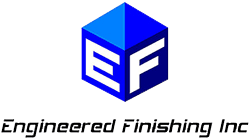In the realm of industrial surface finishing, achieving the perfect finish on metal surfaces often requires the use of robust and efficient blasting techniques. Wheel blasting stands out as a powerful method specifically designed for large-scale surface finishing projects. This technique is known for its ability to handle extensive surface preparation tasks with precision and speed, making it an ideal choice for various surface treatment applications across industries.
Wheel blasting involves the use of high-velocity blasting equipment that propels abrasive media onto metal surfaces, effectively removing rust, paint, and other contaminants. This process not only cleans the surfaces but also prepares them for subsequent treatments such as painting or coating. As a form of abrasive blasting, wheel blasting offers unparalleled efficiency in metal surface finishing, ensuring surfaces are perfectly prepared for any application.
One of the key reasons wheel blasting is favored in industrial surface finishing is its ability to deliver consistent results across large volumes of workpieces. Whether it’s preparing components for manufacturing or refurbishing heavy machinery, wheel blasting provides a reliable solution for industries looking to optimize their surface finishing projects. The technology behind blasting equipment has evolved, allowing for automated processes that reduce labor costs and increase productivity. With its emphasis on durability and adaptability, wheel blasting continues to be a top choice for those seeking effective large-scale surface finishing solutions.
In this article, we will explore the unique advantages of wheel blasting and how it contributes to the success of large-scale surface finishing projects. From the intricacies of the blasting techniques used to the superior outcomes in metal surface finishing, we’ll delve into why this method remains a cornerstone of modern industrial surface finishing practices. Join us as we uncover the transformative power of wheel blasting in achieving exceptional surface treatment results.
Wheel blasting has established itself as a leading choice for large-scale surface finishing projects, thanks to its efficiency and effectiveness in handling extensive surface preparation and metal surface finishing tasks. Here are ten key reasons why wheel blasting is ideal for these applications:
1. Efficiency in Large-Scale Surface Finishing
For large-scale surface finishing projects, wheel blasting offers unparalleled efficiency. The process is capable of handling high volumes of workpieces simultaneously, making it a go-to solution for large-scale manufacturing and production line surface finishing. By using advanced blasting equipment, this method significantly reduces processing times and boosts overall productivity.
- High Throughput: Ability to process numerous parts quickly.
- Reduced Downtime: Efficient operation minimizes downtime between batches.
- Consistency: Delivers uniform results across large quantities of parts.
2. Advanced Blasting Techniques
Wheel blasting employs sophisticated blasting techniques that are crucial for achieving superior surface treatment and surface roughness control. The technology behind blasting equipment allows for precise control over the abrasive media, ensuring that the desired finish is consistently achieved.
- Variable Speed Control: Adjusts the velocity of abrasive media for different applications.
- Adjustable Nozzles: Provides flexibility in targeting specific areas.
- Customizable Abrasive Media: Tailors media to meet specific surface requirements.
3. Effective Surface Preparation
Proper surface preparation is essential for any successful industrial surface finishing project. Wheel blasting effectively cleans and prepares surfaces by removing contaminants like rust, paint, and scale. This step is critical for ensuring optimal adhesion of coatings or paints.
- Rust Removal: Eliminates corrosion from metal surfaces.
- Paint Stripping: Removes old coatings for a clean surface.
- Deburring: Smooths out sharp edges and burrs.
4. Versatility in Surface Treatment
The versatility of wheel blasting makes it suitable for a variety of surface treatment applications. Whether it’s for cleaning, strengthening, or improving the texture of metal surfaces, this method adapts to different needs across various industries.
- Surface Profiling: Enhances surface texture for better coating adhesion.
- Peening: Strengthens metal surfaces through controlled impact.
- Polishing: Achieves a smooth, high-gloss finish.
5. Durability of Blasting Equipment
Blasting equipment used in wheel blasting is designed for durability and long-term performance. Built to withstand harsh conditions and high-intensity use, these machines offer reliable operation for extensive surface finishing projects.
- Robust Construction: Made from high-strength materials to resist wear.
- Low Maintenance: Requires minimal upkeep due to durable design.
- High Efficiency: Engineered for maximum operational efficiency.
6. Cost-Effective Solution
Wheel blasting provides a cost-effective solution for large-scale surface finishing by optimizing material use and reducing labor costs. The efficiency of the process translates into savings in both time and resources, making it an economically viable option for many industries.
- Reduced Labor Costs: Automation reduces the need for manual labor.
- Lower Material Costs: Efficient use of abrasive media.
- Increased Productivity: Faster processing leads to higher output.
7. Enhanced Surface Roughness Control
Achieving precise surface roughness control is critical for many applications, and wheel blasting excels in this area. The process allows for fine-tuning the texture of surfaces to meet exact specifications, ensuring that parts perform as intended.
- Consistent Results: Delivers uniform roughness across all surfaces.
- Adjustable Parameters: Fine-tunes the blasting process for specific needs.
- Quality Assurance: Ensures that surfaces meet stringent quality standards.
8. Innovative Blasting Technology
The latest advancements in blasting technology have enhanced the capabilities of wheel blasting. Innovations include improved automation, advanced monitoring systems, and more efficient abrasive media, contributing to better performance and results.
- Automated Systems: Integration with robotics for seamless operation.
- Real-Time Monitoring: Tracks performance and adjusts parameters dynamically.
- Enhanced Media: New formulations of abrasive media for better results.
9. Suitable for Various Materials
Wheel blasting is versatile enough to handle different types of materials beyond metal. This flexibility makes it suitable for a range of industrial surface finishing tasks across diverse applications.
- Metal: Effective for steel, aluminum, and other metals.
- Plastic: Can be adapted for certain plastic components.
- Composite Materials: Handles surface treatment of composite parts.
10. Scalability for Production Lines
One of the key advantages of wheel blasting is its scalability, making it ideal for production line surface finishing. The process can be easily scaled up or down to meet the needs of varying production volumes, ensuring flexibility in manufacturing operations.
- Modular Design: Allows for easy expansion of capacity.
- Flexible Configuration: Adapts to different production requirements.
- High Volume Capability: Handles large quantities efficiently.
Conclusion
Wheel blasting offers a comprehensive solution for large-scale surface finishing projects, combining advanced blasting techniques with robust blasting equipment to deliver exceptional results. Its ability to handle extensive surface preparation, enhance surface treatment, and provide precise surface roughness control makes it an invaluable tool in industrial surface finishing. As industries continue to seek efficient and cost-effective methods for metal surface finishing, wheel blasting stands out as a leading choice for optimizing manufacturing processes and achieving superior results in production line surface finishing.







